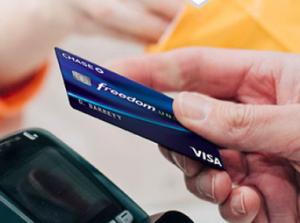NFC TIMES Exclusive Insight – The U.S. is finally on the brink of large-scale contactless EMV card issuance, with optimistic projections from the payment networks, and at least one of the largest U.S. issuers committed to converting its credit and debit card portfolios to dual-interface cards by the end of 2019.
The U.S. has lagged behind other developed countries for years in contactless payments, first in its EMV contact card rollout and now in contactless. The scarcity of contactless bank cards has created problems for efforts to encourage some U.S. merchants to accept contactless because of the relatively low number of potential users. The lag in merchant acceptance in turn hurt use of the NFC payments services, such as Apple Pay and Google Pay, which are accepted at the same POS terminals as contactless bank cards.
Visa, the largest payments network in the U.S., said last year that as of the beginning of 2018, less than 1% of its transaction volume in the U.S. was contactless. Most of that activity was from Apple Pay and to a lesser extent Google Pay, formerly known as Android Pay.

 NFC TimesThe premier source for news, analysis and commentary on
NFC TimesThe premier source for news, analysis and commentary on 